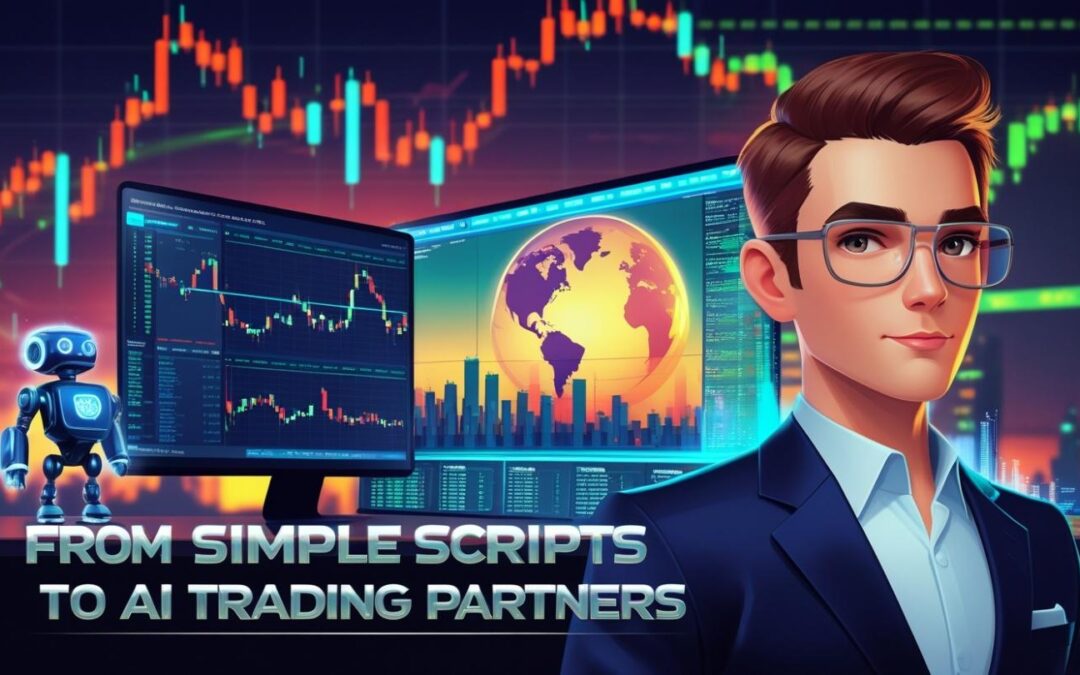The Forex market is unlike any other financial battlefield. It runs 24 hours a day, five days a week, across every time zone, with trillions of dollars traded daily. For human traders, it’s impossible to monitor every move, every chart, and every opportunity. For machines, however, this constant motion is an advantage. That’s where the Expert Advisor (EA) comes in — a trading robot designed to execute strategies with speed and discipline.
But beyond the hype and marketing promises, what role do Expert Advisors really play in trading? Let’s explore their evolution, myths, professional applications, and future potential.
Why Traders Turn to Expert Advisors
The appeal of EAs is obvious: who wouldn’t want a robot trading on their behalf while they sleep? Yet the real reason traders embrace EAs is deeper than convenience.
- Speed matters: In Forex, a delay of a few seconds can change the outcome of a trade. An EA executes instantly.
- Consistency matters: Human traders make emotional mistakes — fear, greed, hesitation. Robots don’t.
- Coverage matters: A trader can watch one or two charts. An EA can scan ten at once, never missing a setup.
“My EA doesn’t replace me — it multiplies me,” one professional trader explained. “It lets me run strategies I couldn’t possibly manage on my own.”
In short, traders use EAs to extend their reach, not to avoid work.
The Evolution of EAs: From Code to Intelligence
The journey of Expert Advisors reflects the evolution of trading itself.
- Early 2000s – The script era: Traders coded basic instructions using MetaTrader’s MQL4 language. EAs opened trades on moving average crossovers or RSI signals.
- 2010s – The strategy era: More complex EAs appeared, including scalping bots, Martingale systems, and grid trading robots. Some made fortunes; many destroyed accounts.
- 2020s – The intelligence era: The rise of AI-driven EAs. These tools adapt to volatility, filter out noise, and even apply machine learning to refine entries.
👉 Curious about this transformation? Check out AI in finance applications for a glimpse into how technology is reshaping trading.
Myths and Misconceptions That Mislead Traders
The problem isn’t the EA itself but the myths surrounding it. Let’s bust a few:
- Myth 1: “A perfect EA exists.”
Reality: No system wins in every market. Even the best EAs face drawdowns. - Myth 2: “The more trades, the more profit.”
Reality: Overtrading increases risk, not returns. - Myth 3: “Robots are smarter than humans.”
Reality: An EA only follows code. If the logic is flawed, it magnifies the error. - Myth 4: “Buy one EA and get rich.”
Reality: Markets evolve. An EA that works today may underperform tomorrow.
⚠️ The EA is a tool — not a magic formula. Misusing it leads to disaster.
How Professionals Use Expert Advisors
There’s a clear divide between how beginners and professionals use EAs. Beginners often expect them to “do everything.” Pros use them strategically.
- Execution machines: EAs handle order placement with precision, freeing traders from manual clicking.
- Risk controllers: Advanced EAs shut down trading when equity drops too far, protecting capital.
- Testing tools: Traders run backtests and forward tests to fine-tune strategies quickly.
- Hybrid partners: Many combine human decision-making with robotic execution — the best of both worlds.
👉 Platforms like Myfxbook allow traders to verify real-world EA performance instead of trusting marketing claims.
Building an EA Portfolio
One of the smartest approaches is not putting all your trust in a single EA. Instead, traders build portfolios:
- Trend-following EA for strong markets.
- Range-trading EA for sideways conditions.
- Scalper EA for short bursts of volatility.
- Risk-balancing EA to manage exposure.
This diversification smooths out equity curves and reduces the risk of relying on one fragile strategy.
The Dark Side of Expert Advisors
Let’s be honest: EAs can be dangerous when misunderstood.
- Over-optimization: Many developers create “curve-fitted” EAs that look great in backtests but fail in live trading.
- Hidden risk systems: Martingale and grid strategies can generate profits for months, only to wipe out accounts in one bad week.
- Broker resistance: Some brokers restrict arbitrage EAs or widen spreads to counter scalpers.
- False security: Traders stop learning, believing the robot will handle everything.
A robot amplifies your approach. If your approach is flawed, the EA accelerates failure.
Where EAs Fit in the Future of Forex
The coming years will bring a new wave of trading technology:
- Neural networks capable of recognizing hidden market patterns.
- Adaptive systems that adjust risk automatically during news events.
- Integration with copy trading, where EAs are shared, rented, or sold as subscription services.
- Hybrid AI + human models, where traders act as strategists and EAs handle execution.
The future of EAs is not about replacing traders but about creating partnerships where humans provide context and robots provide precision.

Should You Use an Expert Advisor?
The honest answer: Yes, but carefully.
An EA is powerful, but it’s not a holy grail. The best results come when you:
- Use EAs as assistants, not replacements.
- Combine them with risk management rules.
- Stay engaged — adapt strategies as markets evolve.
Think of it this way: pilots trust autopilot systems, but they never leave the cockpit. In trading, you are the pilot, the EA is the autopilot.
Final Thoughts
The Expert Advisor has come a long way — from simple scripts that followed moving averages to sophisticated systems experimenting with AI. Along the way, it has built a reputation both as a miracle worker and as a destroyer of accounts. The truth lies in between.
- In reckless hands, EAs magnify mistakes.
- In disciplined hands, they scale consistency and efficiency.
The question isn’t whether EAs work. It’s whether you know how to work with them.
👉 If you really want to integrate EA into your trading, start by strengthening your foundation with cheap Expert Advisors at https://ecomforex.com/






